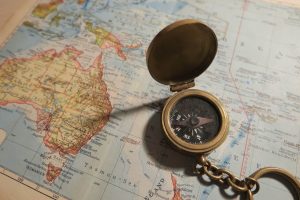
Animals may not speak our language, but they are in fact communicating with us all the time. All it takes is knowing how to receive the transmissions of information to understand their thoughts, emotions and experiences.
I believe that everybody has the innate ability to profoundly connect with animals. And yet throughout life, we often learn to trust our logical mind instead of our senses and natural instincts.
Animals, on the other hand, can teach us a lot when it comes to being receptive to such instincts. After all, they rely heavily on their intuition to survive.
We’re going to look at three animal communication techniques which allow us to listen to our intuition and communicate with our companions: body scanning, gestalt and remote viewing.
I use these techniques on a regular basis to receive certain messages, impressions, feelings – and even words from an animal both near and far.
Why Use Animal Communication?
Animal communication is a powerful way of establishing a deeper bond with our companions. Especially if you want to find out why they’re behaving in a particular way, or even to locate them if they go missing.
With the right approach and techniques, we can communicate with animals and learn how they feel, where they experience physical imbalance as well as their location when they go missing.
1. Body Scanning: Using the Physical Form
A body scan is a technique used to notice the energetics of another creature. It can help us to gain insight into the animal’s physical or emotional state.
By focusing on a photo of the animal or the animal in front of us, we can establish a telepathic link and scan their body.
Think of it as using an airport luggage scanner, but instead of scanning luggage, we move our eyes along the animal’s body, sensing inside and detecting an energy zone that feels distinct from the rest.
From here, we’ll be able to detect any areas of energetic imbalance or discomfort. It may feel “sticky”, magnetic, or faint – for example. We may also feel our attention being drawn to a particular area of the animal.
By understanding the areas out of balance, we can be better informed when discussing the concern with a trusted animal health professional. We can learn a lot simply by connecting with an animal’s non-verbal experience using the body scan technique.
2. Gestalt: Accessing Animal Consciousness
Gestalt is another powerful way of decoding how an animal is feeling. It involves using your intention to move your awareness inside the body of an animal and experiencing the world from their unique perspective.
Before we attempt this method of understanding an animal better, we always seek the animal’s permission to do this before we merge our consciousness with theirs.
By merging our consciousness with the animal’s, we can bridge the gap between both humans and animals. From here, we’re able to assess how the animal is feeling from the inside, physically and emotionally, so we can then understand how to help them.
3. Remote Viewing: Connect From A Distance
Remote viewing is a technique that allows us to access information about an animal’s location or experience from a distance. Anybody can access their remote viewing capabilities using their intuition.
Originally remote viewing was developed as ‘Controlled Remote Viewing’ in the Cold War by the U.S. Army, which trained soldiers to spy on their enemy. It involved a set of protocols and is very different to the technique used by animal communicators.
By moving our consciousness to the location with intention, we can then discover a non-local place using all of the senses. This is particularly helpful when locating a lost animal and enabling their safe recovery.
Finding Lost Animals: The True Story of Marmite
Let’s delve into an example of these techniques in practice.
In 2008, I successfully located a missing Jack Russell dog named Marmite using all three of these techniques. The experience was so profound, that it really was where my career as an animal communicator began.
Initially, I established a telepathic link by connecting with Marmite through a photograph. I then used the gestalt technique to “move” into Marmite’s body. From there, I could sense the world through his paws, see through his eyes, and perceive where he was.
It was through this telepathic connection that I realised that Marmite was trapped underground in a concrete shaft, which was connected to water of some kind.
I then used remote viewing to pinpoint Marmite’s location – even though I was over 100 miles away. I mentally “hovered” above the area where Marmite was believed to be trapped. From this vantage point, I could provide Marmite’s guardian with more details about the surroundings.
Using these techniques, along with basic animal communication, we were able to locate Marmite within an hour, approximately a mile away from his home, trapped down a canal shaft.
He had been missing for a week, and his rescue was a testament to the power of animal communication in reuniting lost animals with their loved ones.
You can read the full story of Marmite in chapter 15 of my book, Heart to Heart.
Search and Rescue with Animal-Human Communication: Joey’s Story
The case of Marmite is not an isolated example. In the same book, Heart to Heart, is also the true story of a cat called Joey, who went missing in Spain before I helped to reunite him with his guardian.
Joey communicated picture images of where he was located, and I used the gestalt and remote viewing to add more details to his whereabouts.
From there, that enabled me to let his guardian know where he was – which was locked in a basement of an uninhabited building next door. He was weak and dehydrated when his human got to him.
All these skills can help us to intuitively understand how our animal is feeling and gives us useful information so we can move forward with next steps in their care. It also brings hope to the guardian and their animal.
Whether that’s passing on vital information to a trusted animal health care professional, or locating them when they go missing, animal communication is a powerful way to generate greater understanding between humans and animals.
Learn To Be An Animal Communicator – UK Workshops
Animal communication is a skill that can be learned with dedicated practice. By honing these techniques, individuals can deepen their bond with their animal companions, and improve both yours and your companion’s wellbeing.
If you are interested in exploring animal communication further, workshops and training sessions are available for beginners upwards, such as my Body Scanning, Gestalt, and Remote Viewing Workshop Weekend located in the UK in October 2023, or one of the other animal communication workshops or retreats.
Pea Horsley is an international teacher, TEDx speaker and bestselling author of 3 books including ‘Heart to Heart’ and ‘The Animal Communicator’s Guide’, which have been translated into nine languages, online course Animal Communication Made Easy, and creator of the Conversations with Nature World Summit. Pea is the UK’s most highly regarded animal communicator and wild animal retreat facilitator. Join Pea’s membership, The Pride, and be part of a global community listening to a council of animals advising humanity and together forging real transformation.





